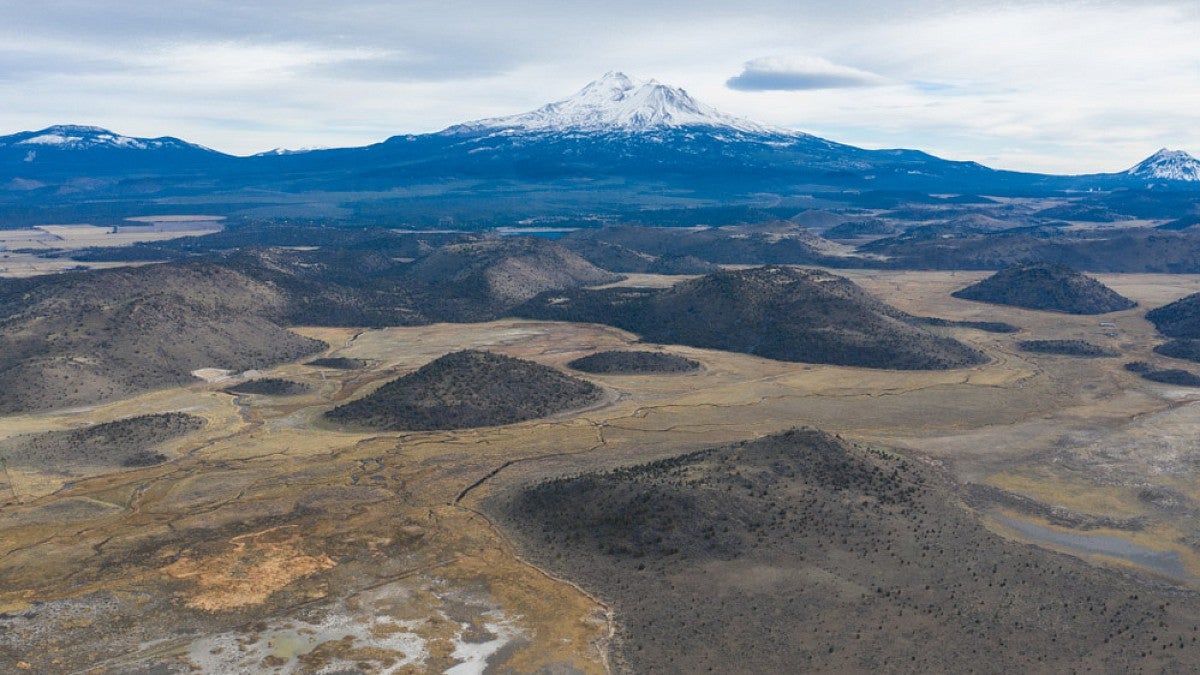Volcanic eruptions in the Cascade Range have occurred more often than commonly thought over the last 2.6 million years, and they’ve left subsurface signatures that tie them to current magmatic activity, University of Oregon researchers report.
In a study in the journal Geology, a team led by UO doctoral student Dan O’Hara catalogued almost 3,000 volcanoes associated with the Cascades. The paper merged information on surface volcanic vents and data on the structure and composition of the crust to a depth of 12 miles. Clear connections between surface and subsurface signs of past eruptions were identified.
The National Science Foundation-supported project shed fresh light about the complex and time-evolving patterns of rising magma in the region, said study co-author Leif Karlstrom, a professor in the UO Department of Earth Sciences and Oregon Center for Volcanology.
That activity, he said, stretches far beyond the 11 well-known major volcanoes lining the Cascade Arc.
“Anyone who has ever flown between San Francisco and Seattle has probably marveled at the massive stratovolcanoes lined up between Northern California and southern British Columbia,” Karlstrom said. “Remarkably, these landforms represent less than 1 percent of the volcanoes in the Cascades that have erupted in the geologically recent past.”
The research team used freely available satellite-derived 3D digital terrain models to update estimates of eruption rates and synthesize subsurface observations over recent decades. The team mapped where signs of active magma in the crust correlates with edifices on the surface. Edifices refer to the main portion of volcanoes built by erupted lava, rock projectiles, mud and debris flows, and mixture of rock fragments, gas and ash.
The modeling associated these edifices with underlying seismic velocities, heat flow, gravity and deformation that are sensitive to the influence of magma. It showed where surface vents seem to overlie currently active magma transport structures in the crust.
“Previous studies have analyzed single volcanoes or volcanic clusters with satellite data, but this is the first study to constrain volcano geometries over an entire arc in a self-consistent manner,” O’Hara said. “We estimate that volcanic edifices represent about 50 percent of total volcanic output during the time period we examined.”
The findings of the new study will help guide more in-depth studies of distributed volcanic vents and assessements of hazards and risks to people and infrastructure, said co-author David W. Ramsey of the U.S. Geological Survey’s Cascades Volcano Observatory in Vancouver, Washington.
Distributed volcanic vents are associated with small cinder cones that cover much of the central Oregon Cascades and areas such as the Boring Lava Field in Portland and the Medicine Lake volcano in California.
“This research used a consistent methodology to analyze volcanic vents spanning the entire U.S. Cascade Range,” Ramsay said. “It helps to highlight recently active volcanic vents, particularly in Central Oregon and Northern California, and shows that the locations of potential future eruptions are not limited to the snow-capped stratovolcanoes on the horizon.”
The region’s major stratovolcanoes, which stretch along the junction of the Juan de Fuca and North American plates, are Mount Baker, Glacier Peak, Mount Rainier, Mount St. Helens, Mount Adams, Mount Hood, Mount Jefferson, Three Sisters, Crater Lake/Mount Mazama, Mount Shasta and Lassen Peak.
O’Hara, who grew up in a small Pennsylvania town near the Allegheny Mountains, came to the UO to study earthquakes, but an invitation from Karlstrom redirected his focus. He holds bachelor’s degrees in geology and computer science from Indiana University of Pennsylvania.
—By Jim Barlow, University Communications


